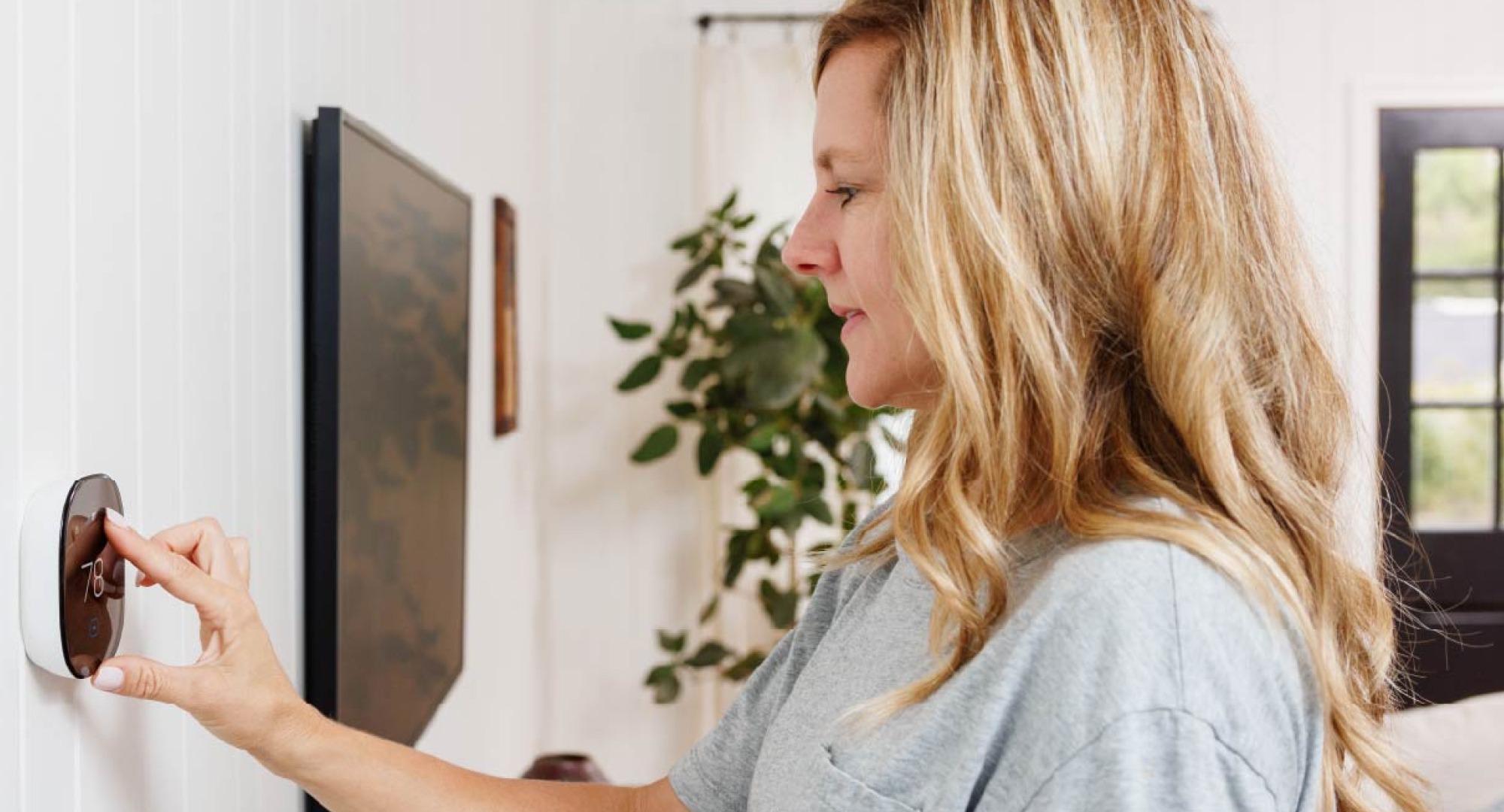26 ways to boost your home’s energy efficiency in

Anytime is the right time to try out new energy-saving habits and play with new energy-saving gadgets. That’s why we’re happy to share 26 ways to boost your home’s energy efficiency (and help keep a little extra cash in your back pocket).
Whether you rent or own your home and need no-cost or low-cost DIY ideas or you’re ready to invest in long-term home energy upgrades, TVA EnergyRight® is here to help you get started — and keep the energy savings going all year long.
In honor of the new year, we’ve rounded up 26 ways to boost your home’s energy efficiency in 2026 — let’s jump in!
(NOTE: This blog was originally published on December 19, 2023 and was revised in 2025. It has been updated for 2026.)
Get started with these easy energy-saving wins!
1. Take our free DIY Home Energy Assessment.
Answer questions about your home’s current energy use, and at the end of the assessment, you’ll gain access to a personalized dashboard with energy improvement recommendations tailored to your home.
You’ll also receive a free energy-saving kit and a $10 home improvement store gift card in the mail within 4-6 weeks. Take the assessment right now!
2. Check out our home energy rebates.
From HVAC systems to air sealing and insulation, home energy rebates from TVA EnergyRight and your local power company increase the affordability of upgrades that lower utility bills and boost your indoor comfort. Explore rebates.
3. Add calendar reminders for recurring energy-saving tasks.
Sometimes the hardest thing about saving energy isn’t the task itself … it’s remembering to do it! For recurring events, like changing your air filter at least once every three months, add them to your calendar and enjoy having one less thing you have to remember.
4. Enroll in TVA’s Green Switch program.
For as little as $2 a month on your electric bill, you can support 100% solar energy sourced directly from the Tennessee Valley. Enroll in Green Switch today.
5. Set the mood with smart LED bulbs
Level up your LED game this year with smart LED bulbs. You’ll have fun programming your lights to greet you (turn on automatically) when they detect motion, aligning brightness to circadian rhythms, selecting custom colors — and control them all via an app or voice command.
Heating your home and keeping clean air flowing.
6. Sign up for Smart Thermostat Rewards
ENERGY STAR® and the U.S. Department of Energy report that you can save an average of 8%-10% on your heating and cooling costs using a smart thermostat. Find out if your local power company is participating in Smart Thermostat Reward and you can save even more!
7. Turn the thermostat down a few degrees.
Heating your home makes up a big chunk of your monthly energy bill. According to the Department of Energy, you can save as much as 10% a year on heating and cooling by turning your thermostat down 7°F – 10°F for 8 hours a day in the fall and winter. So, find your favorite blanket and some cozy socks to start saving energy today!
8. Get your duct system professionally cleaned.
Keep clean air flowing, uncover cracks or holes in ductwork and increase the efficiency of your HVAC system when you get a professional duct system deep clean. Don’t know who to hire? Try a TVA-vetted contractor from our Quality Contractor Network. Find your next contractor.
9. Schedule an HVAC system tune-up.
Is your heating system electric? Don’t get stuck in a chilly (or even life-threatening) emergency situation this winter. Knock out your HVAC tune-up now with a $50 rebate. (Gas heat? Get your $50 rebate in the spring with an air conditioner tune-up.) Explore rebates.
10. Uncover any blocked air vents.
If there’s anything blocking your air vents — a couch, a bed, rugs, drapes, an entertainment center — it’s going to make your HVAC system work harder to keep a controlled temperature. You want unobstructed vents for maximum airflow and maximum energy savings.
11. Weatherstrip doors and windows.
A little gap here, a little gap there — those spots around doors and windows where air sneaks in and out are a bigger deal than you might think. Even a 1/8-inch gap around the entryway of a door is equivalent to drilling a 5-inch hole through the outside wall! Seal everything up with caulk and weatherstripping.
12. Kick dust bunnies to the curb.
Ductwork, bathroom exhaust fans, the back of your refrigerator — these not-so-obvious spots can be a haven for dust bunnies. All that dust makes your appliances work harder, increasing your energy bill and adding unnecessary extra wear and tear.
Saving energy in the kitchen.
13. Use the dishwasher instead of washing dishes by hand.
An ENERGY STAR® dishwasher uses less than 4 gallons of water total per cycle compared to washing dishes by hand, which uses 4 gallons every 2 minutes! If you have an energy efficient dishwasher, then it doesn’t need to be full before you run it.
14. Skip the pre-rinse.
The energy efficiency of dishwashers has come a long way, and so has the cleaning power of dishwashing detergents. In fact, quality dish detergents can’t effectively do their job if they don’t have anything to cling to. Food scraps still need to go into the garbage or compost, but skip the pre-rinse and you’ll save water and electricity. (Tip: If you forgo the pre-rise, you may need to clean out your dishwasher’s filter a little more often. Consider setting a reminder to clean the filter once a month.)
15. Clean the refrigerator grill and coils.
A buildup of dust and debris behind and under your refrigerator will make it less energy efficient. Vacuum and wipe down your refrigerator grill (the slatted piece below the doors or freezer drawer). Carefully remove the grill and vacuum under the refrigerator. Then, head to the back of the appliance and look for a metal panel. Unscrew it and gently vacuum the coils before reattaching the panel.
16. Pull the refrigerator slightly away from the wall.
Your refrigerator needs room in the back so air can circulate and the heat it generates has space to dissipate. Make sure there are about 2 inches between the refrigerator and the back wall.
17. Keep your freezer full and avoid overfilling your refrigerator.
A full freezer traps cold air, and a full, but not-too-full, refrigerator means air can flow and your items will stay cold.
18. Clean the oven and stovetop.
A dirty stove has to work harder to heat itself, and that’s going to drive up your energy costs. Grab some inexpensive oven degreaser spray and give the inside of your oven a good wipe down, including the bottom where grease and food can collect. Don’t forget the cooktop, especially if your appliance has burner drip pans.
19. Match pot and pan sizes to burner sizes.
Large burners use more energy. A too-small pot or pan on a large burner means you’re heating space with nothing on it and burning up easy savings.
Saving energy on technology
20. Unplug small appliances when they’re not in use.
Curling irons, electric razors, the air fryer and coffee pot — if you’re only using an item for a brief period of time each day, power it all the way down when you’re done and unplug it from the outlet.
21. Buy a smart power strip.
A device in standby mode is still using energy. A smart power strip detects when a device has gone into standby mode and cuts power to the device.
22. Take time off from tech.
Pick one night a week to go screen-free. Substitute TV, tablets and video games with activities that use less energy (and are maybe just as fun?) like board games, puzzles and books.
Saving energy on laundry
23. Air-dry laundry.
If the idea of a backyard clothesline seems like a stretch, take a quick spin around some of your favorite online stores and you’ll find dozens of stylish and affordable indoor clothes drying racks.
24. Clean the dryer vent.
A full lint trap makes your dryer work harder, and it’s also a fire hazard. Empty the lint trap after every dryer use. Twice a year, clean the full dryer vent, the part that extends from the back of your dryer to the outside of your home. This is especially important if your dryer stays in heavy rotation and/or you have furry pets.
Two for the road.
25. Rent or buy an e-bike.
Put some power behind the pedals! E-bikes give you all the fun of a traditional bicycle with less physical effort thanks to the added boost of battery power. Leave the car at home, save on fuel and head out for an adventure.
26. Try out mass transit.
Next time you’re headed to a concert, sporting event or even just a trip to the mall, hop on your area’s local public transportation. You’ll beat the traffic, save on the pricey parking and likely get to your destination for less than it would cost to drive there.
Whether you try one energy-saving tip, try all 26 or come up with more on your own, TVA EnergyRight and your local power company are here to help you take the next steps toward a more energy-efficient home. Find even more resources at EnergyRight.com/Residential. Happy New Year!



